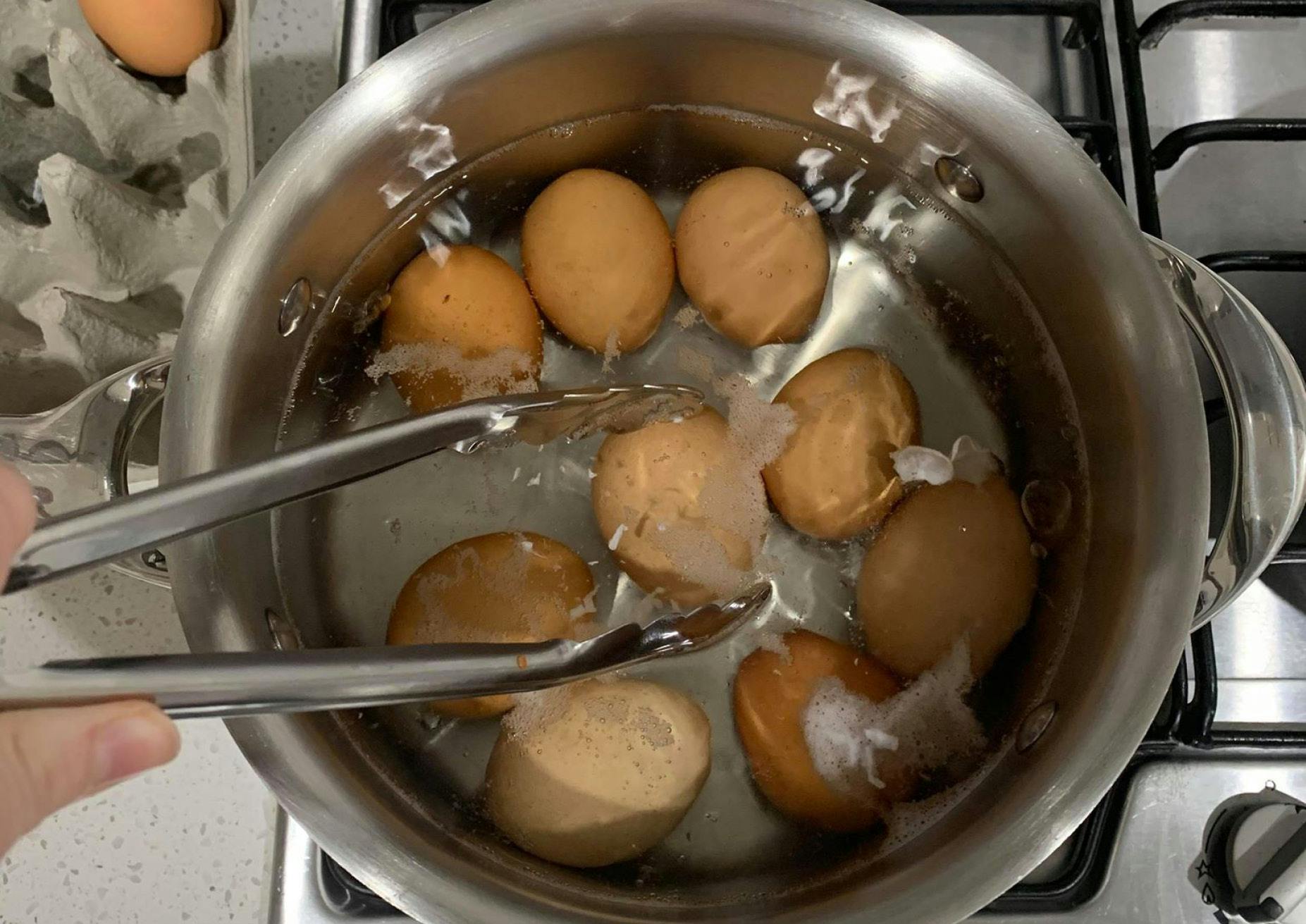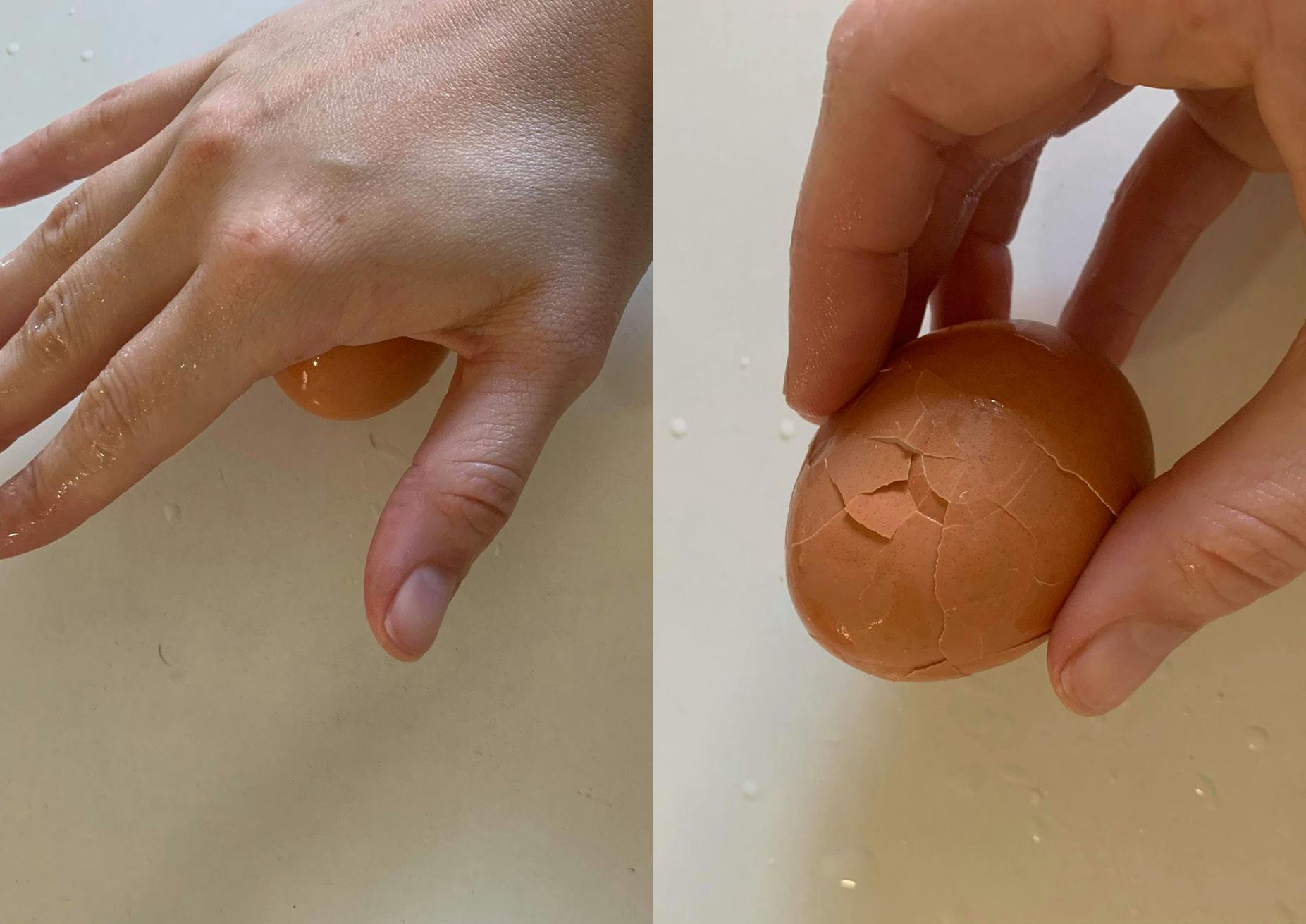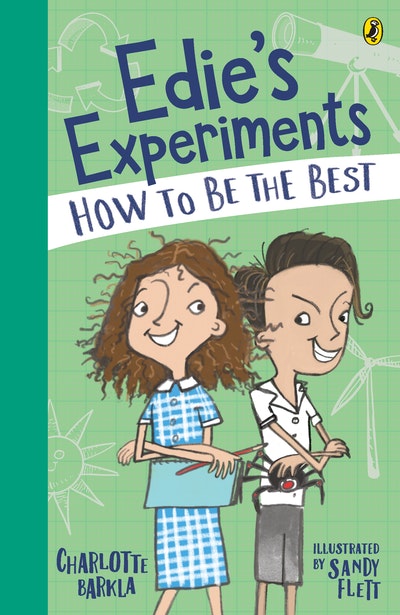Create your own marbled Easter eggs with ingredients from the pantry.
For teachers and parents: This is a fun STEM activity for students and children at home. Ideal for years 3–5, this 'eggs-periment' activity will combine science and art. If you use food-grade dye, these eggs will be safe and delicious to eat in a healthy salad for lunch.
For students:
Edie loves science, and she loves Easter too! This is a fun craft activity that Edie likes to think of as an Easter EGGS-periment!
But don’t worry, unlike her Surprise Slime Experiment that ended up with slime all over the classroom, this one is guaranteed to make your classmates/family smile.
You can read more about Edie's story in Edie's Experiments 1: How to Make Friends or read an extract from the book here.
Hope you enjoy the activity!
Edie's Easter Eggs-periment

Aim
To make some awesome, marbled-coloured eggs for Easter.
Equipment
- Eggs
- Food colouring (liquid)
- Water
- Mugs
- Tongs (or a spoon, used to lift eggs in and out of water)
- Pot
- Salt
Method
1. Make sure the eggs are at room temperature. Then you'll need to hard boil the eggs on the stove with the help of an adult.
a) Place your eggs inside a pot and fill it with water so that all the eggs are well covered. Add a pinch of salt to the water.
b) Turn on the stove and bring the water to boiling point. Let it boil for a few minutes, then turn off the stove and put a lid on the pot. Let them sit for 15 minutes.
c) Using tongs, take your eggs out using and allow them to cool.

2. Fill the mugs with water until they are 3/4 of the way full. Add 8–10 drops of food colouring to each mug.
Tip: Try mixing colours to create new ones! E.g. Blue and red will make purple. Darker colours will have the best results.

3. Gently crack your hard-boiled eggs by rolling them, tapping them on the bench or crushing the shell in your hand. Apply just enough pressure so that the shells crack but don't break apart and fall off.
Tip: Time to experiment! What patterns will you put on your eggs? Try cracking some a lot and others only a little. Peel off the shell in spots to make speckled eggs. Get creative!

4. Carefully place the eggs into the coloured water and leave them in the refrigerator to soak for at least one hour. For best results, leave the eggs to soak overnight.

5. Remove your eggs from the mugs and peel them to discover each unique design!


You should now have a set of beautiful marbled Easter eggs! They are safe to eat and can be enjoyed in a tasty salad for lunch.
Science facts: Did you know, boiling water is an example of a change of state (or ‘change of phase’). The heat from the stove makes the water molecules move faster and faster, until they separate so much that they form a gas (water vapour). You can see the liquid changing to a gas through the bubbles that form when the water boils. (Just don’t get too close to the hot water – water boils at 100 degrees Celsius, so it’s very hot!)















